https://echo360.org.au/lesson/9750cbfe-6500-42f7-b024-45c5cf2a69b0/classroom#sortDirection=desc
Adding the time dimension to the image formation
1. Detecting Motion
1). Change Detection
image subtraction: 两图相减,对于每个pixel的值, 大于threshold为1,小于为0

2). Sparse motion estimation Using template matching to estimate local displacements
(1) Motion Vector : 向量代表点的移动
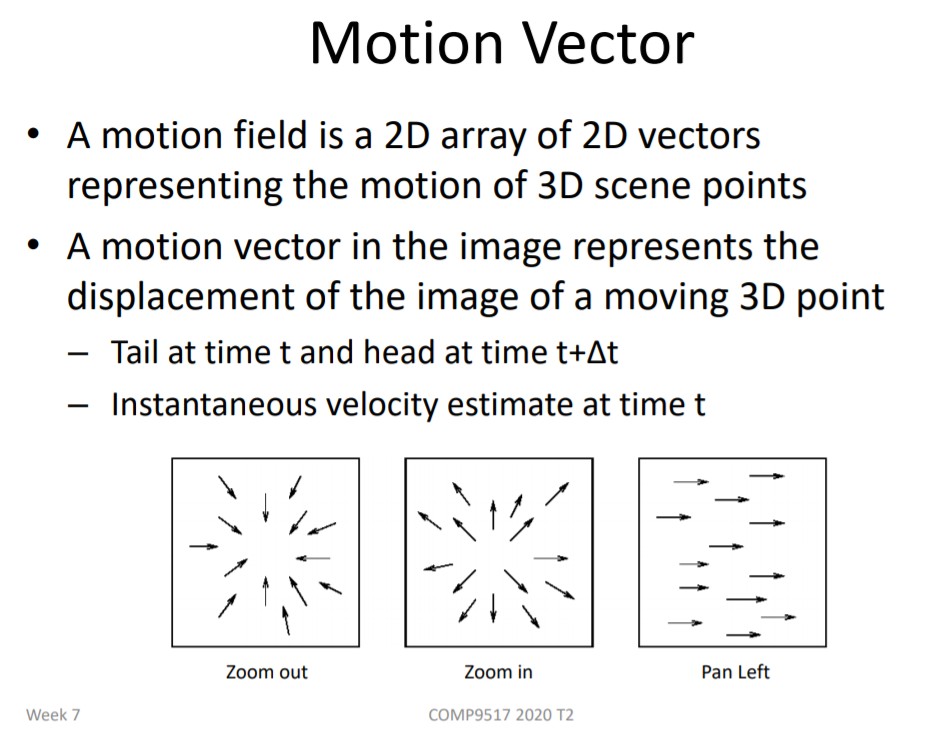
(2) 检测目标点, 寻找对应点在t+Δt ; 假设点移动的不远。
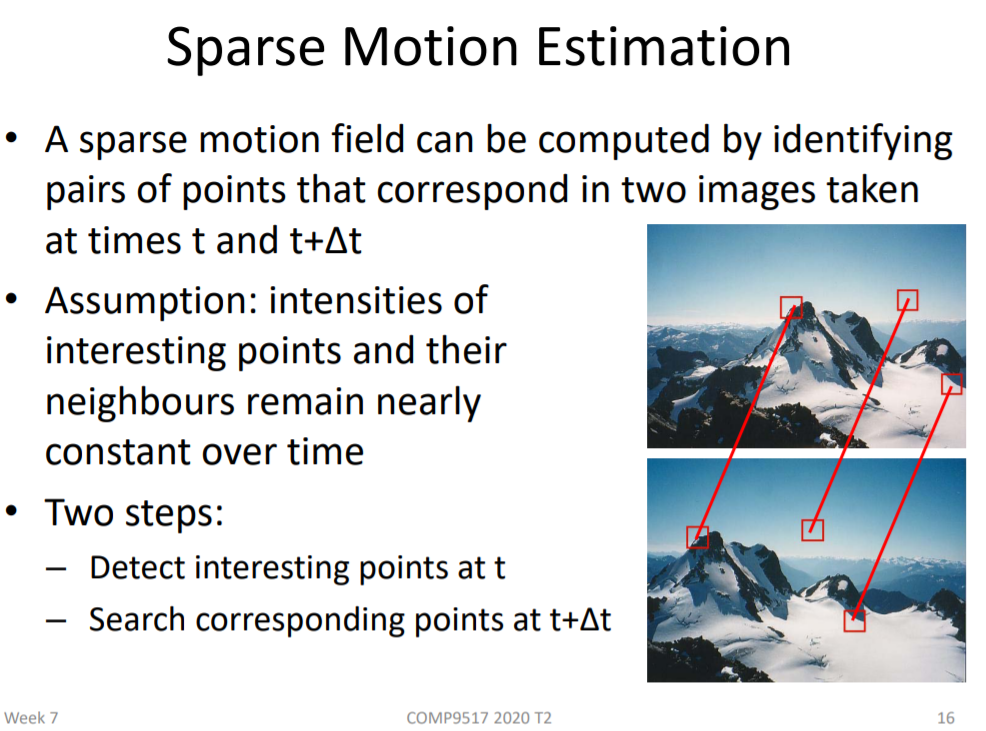
(3) 检测目标点的方法 filters, operators
计算水平,垂直,斜线方向的intensity variance, 如果最小值>threshold,则是interest point
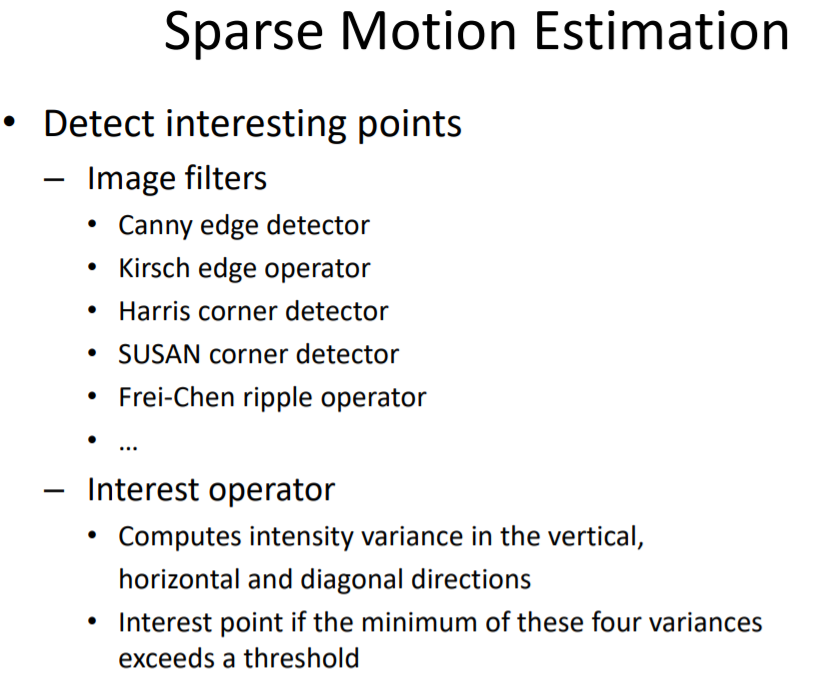
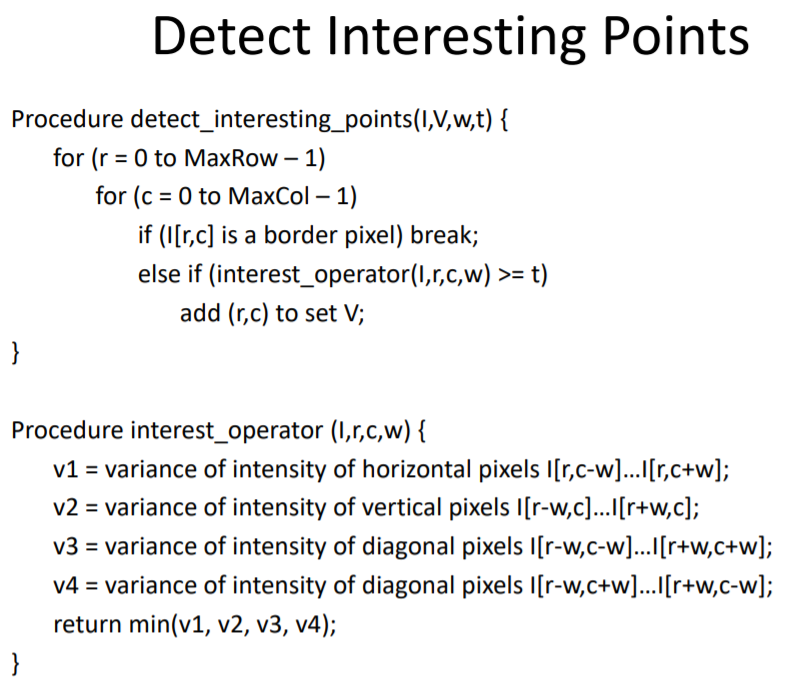
(4)Search corresponding points
template searching:
1. 对于 interest point,在其周围划定一个neighbour区域,基于一些prior knowledge,在下一张图限定search region,try to find a similar pattern
2. Similarity Measures : 对两个template,计算相似度:
1) 计算对应点乘积之和,求最大 ; 计算对应点绝对值之差,求最小; 计算对应点之差的平方,求最小
2)Mutual information,求最大: intensity distribution histogram 计算 概率

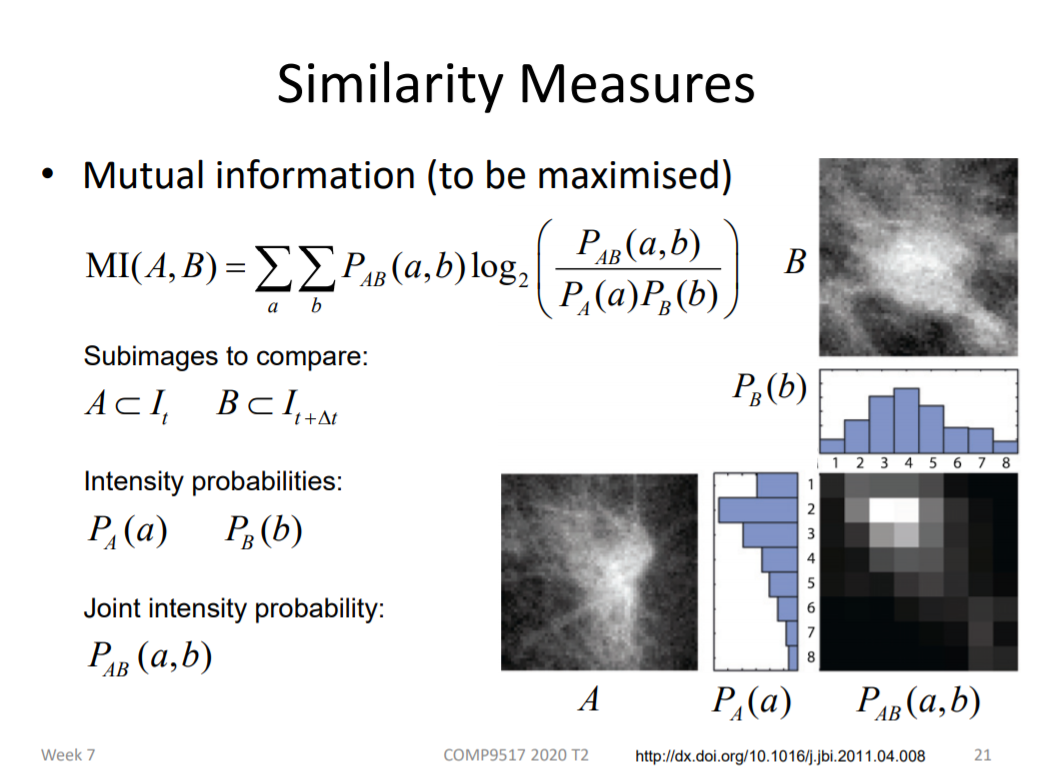

3). Dense motion estimation Using optical flow to compute a dense motion vector field
(1)假设:time interval之间,物体与camera之间不产生巨大位移; t时刻的neighbourhood能在t+Δt时刻找到
(2)联立 泰勒展开与OF不等式
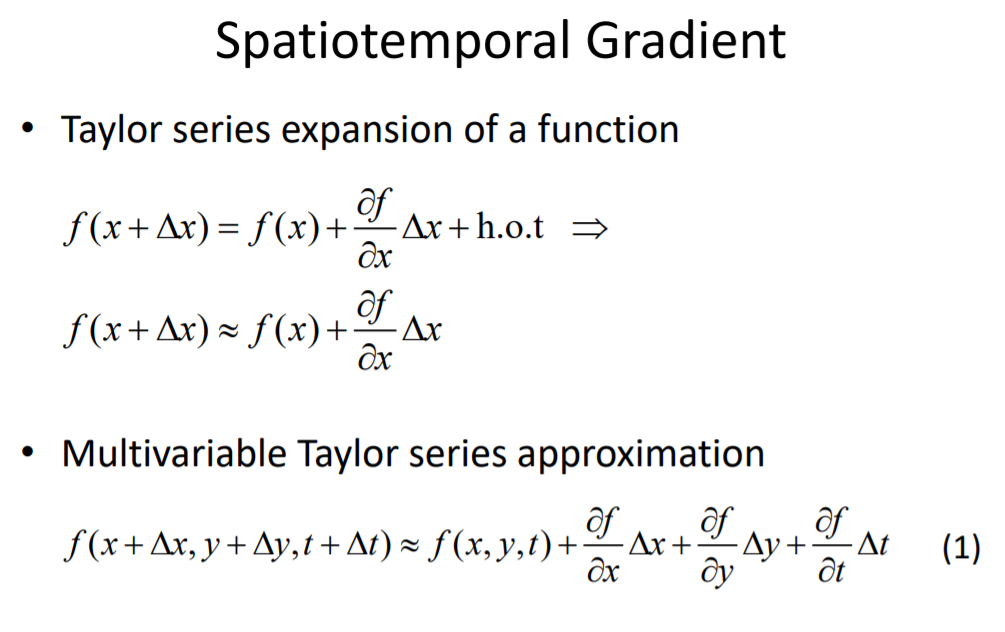
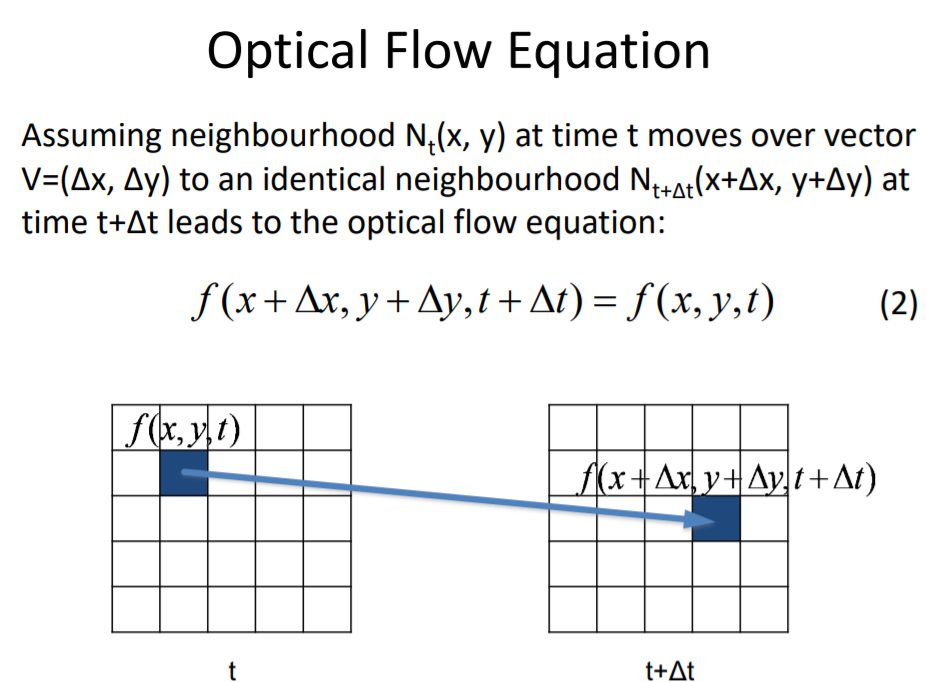

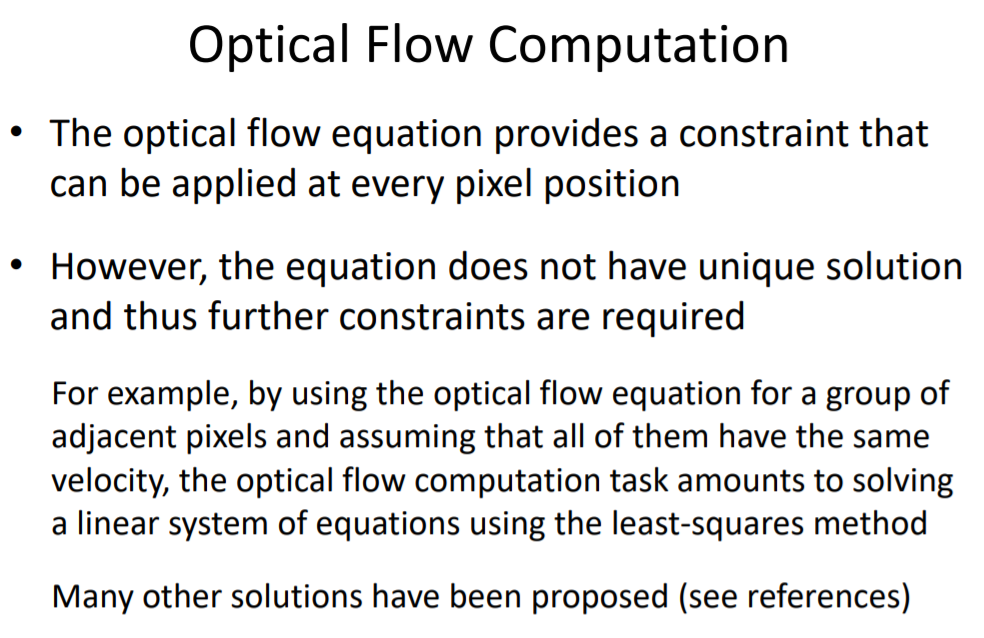
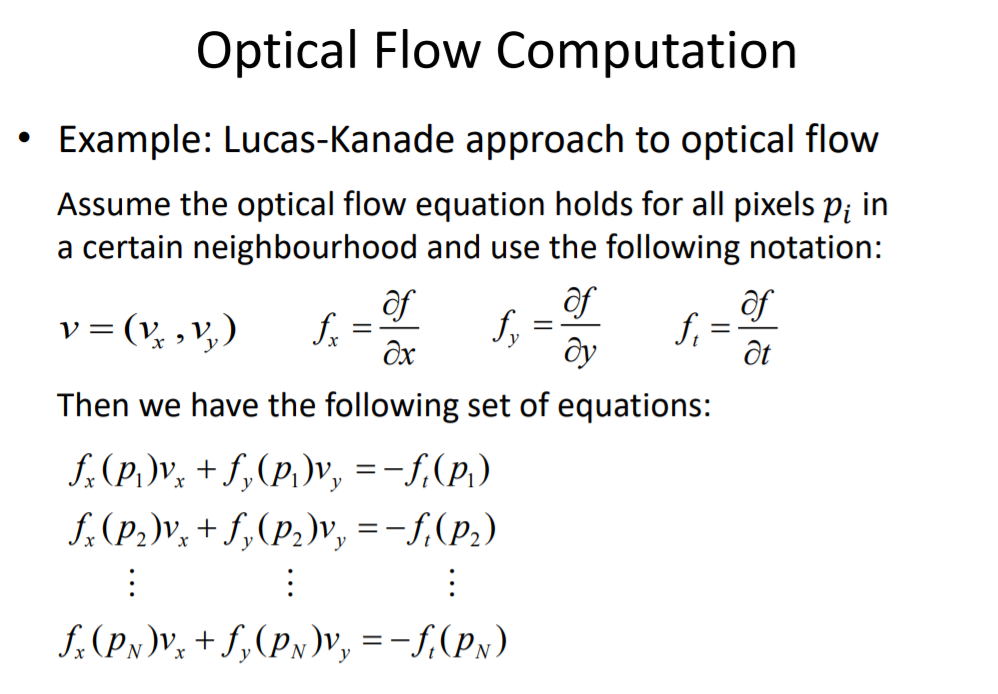


2. Tracking